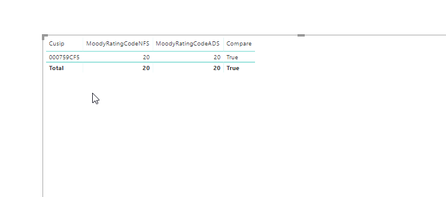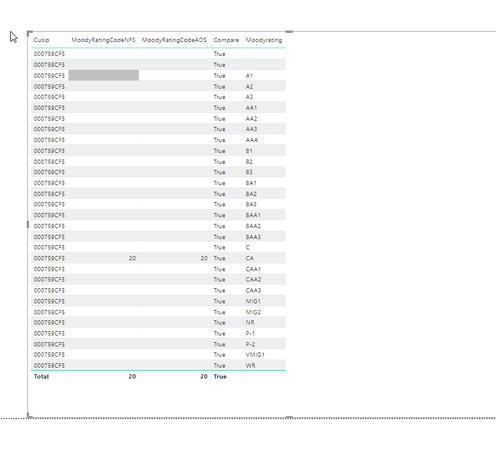FabCon is coming to Atlanta
Join us at FabCon Atlanta from March 16 - 20, 2026, for the ultimate Fabric, Power BI, AI and SQL community-led event. Save $200 with code FABCOMM.
Register now!- Power BI forums
- Get Help with Power BI
- Desktop
- Service
- Report Server
- Power Query
- Mobile Apps
- Developer
- DAX Commands and Tips
- Custom Visuals Development Discussion
- Health and Life Sciences
- Power BI Spanish forums
- Translated Spanish Desktop
- Training and Consulting
- Instructor Led Training
- Dashboard in a Day for Women, by Women
- Galleries
- Data Stories Gallery
- Themes Gallery
- Contests Gallery
- QuickViz Gallery
- Quick Measures Gallery
- Visual Calculations Gallery
- Notebook Gallery
- Translytical Task Flow Gallery
- TMDL Gallery
- R Script Showcase
- Webinars and Video Gallery
- Ideas
- Custom Visuals Ideas (read-only)
- Issues
- Issues
- Events
- Upcoming Events
The Power BI Data Visualization World Championships is back! Get ahead of the game and start preparing now! Learn more
- Power BI forums
- Forums
- Get Help with Power BI
- DAX Commands and Tips
- creating measure which compares values from two di...
- Subscribe to RSS Feed
- Mark Topic as New
- Mark Topic as Read
- Float this Topic for Current User
- Bookmark
- Subscribe
- Printer Friendly Page
- Mark as New
- Bookmark
- Subscribe
- Mute
- Subscribe to RSS Feed
- Permalink
- Report Inappropriate Content
creating measure which compares values from two different tables with the same key
Hi all,
I am currently building a dashboard which compares two datasources for Security Ratings.
Let's say the two tables are named 'Source1' and 'Source2', both has [Cusip](which is the unique id for securities), and [RatingValue]
I want to see whether 'table1'[RatingValue] = 'table2'[Ratingvalue] for every Table1[Cusip] = Table2[Cusip], return false if they dont match, true if they match. My idea is to use dax function Related() but I havent figured out how to.
Could anyone help with this? Greatly appreciated.
- Mark as New
- Bookmark
- Subscribe
- Mute
- Subscribe to RSS Feed
- Permalink
- Report Inappropriate Content
Hi @Anonymous ,
So created two tables with your columns. However since I could not tell from your post whether all Cusip in one table are in the other, I made some different. I linked the tables in PQ as 1:1. Both tables are on the dashboard so you can see my data. The measure is at the top of the screen and below. You could break apart the IF so that you could have a third response of not in the table. Right now if there is not a match for whatever reason it is a False.
If this solves your issues, please mark it as the solution, so that others can find it easily. Kudos are nice too.
Nathaniel
Did I answer your question? Mark my post as a solution!
Proud to be a Super User!
- Mark as New
- Bookmark
- Subscribe
- Mute
- Subscribe to RSS Feed
- Permalink
- Report Inappropriate Content
@Anonymous ,
Thinking about this more, you can drop the CALCULATE()
Nathaniel
Did I answer your question? Mark my post as a solution!
Proud to be a Super User!
- Mark as New
- Bookmark
- Subscribe
- Mute
- Subscribe to RSS Feed
- Permalink
- Report Inappropriate Content
Hi Nathaniel,
Thank you for your response! Your solution works when I only have Cusip, Source1[BondRatingCode], Source2[BondRatingCode] and the measure Compare in one table. (I have filters to show only one Cusip so it's clear to see what is happening)
However, when I add another column [BondRating], which should be corresponding to [BondRatingCode], such that each [BondRating] correspond to a [BondRatingCode], seen as screen shot below.
The result table in theory shouldn't change besides having one more column [BondRating], however, after I added [bondRating], it seems like the table populated each Cusip with all possibilities of [BondRating], which makes the result incorrect, seen in the screenshot below. Do you know how this can be resolved?
the relationship between the two table is one-to-one on [Cusip], both direction.
Helpful resources

Power BI Dataviz World Championships
The Power BI Data Visualization World Championships is back! Get ahead of the game and start preparing now!

| User | Count |
|---|---|
| 19 | |
| 13 | |
| 10 | |
| 4 | |
| 4 |
| User | Count |
|---|---|
| 31 | |
| 28 | |
| 19 | |
| 11 | |
| 10 |






